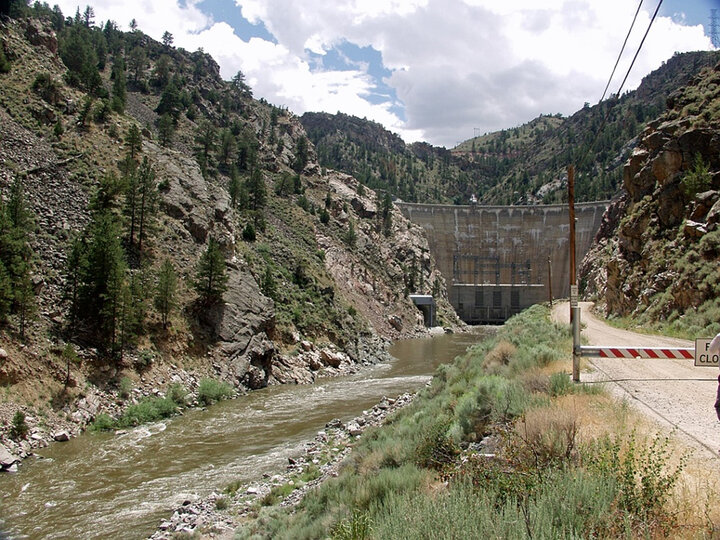Part 3 of a six-part series on the dams, reservoirs, power generation and some diversion dams located on the North Platte River. The series will follow a chronological order of the history and construction of these projects.
Related Articles:
- Part 1: The North Platte River Basin Projects — Background
- Part 2: The North Platte Project – Pathfinder, Guernsey and Whalen
- Part 3: The Kendrick Project — Seminoe and Alcova
- Part 4: The Pick-Sloan Missouri River Basin Project — Kortes
- Part 5: The Pick-Sloan Missouri River Basin Project — Glendo
- Part 6: Other Dams, Reservoirs and Powerplants – Nebraska and Wyoming
The Kendrick Project — Seminoe and Alcova
The first dam and reservoir on the North Platte River after it enters from Colorado is Seminoe. Seminoe dam is part of the Kendrick Project intended to generate hydropower and expand irrigation in central Wyoming. The project, called the Casper-Alcova Project, was authorized in 1933 under the National Recovery Act during the Great Depression. The project was renamed the Kendrick Project in 1937. The Kendrick Project also includes the Alcova dam, reservoir and the Casper-Alcova Canal.
Seminoe dam is located about 75 miles southwest of Casper, Wyoming. Construction started in 1934 and was completed in 1938. This dam was constructed expressly for the purpose of hydropower generation. The dam is a medium-thick concrete arch 295 feet high with a crest length 530 feet. The reservoir capacity is 1,017,280 acre-feet and provides water for approximately 24,265 acres for the Kendrick Project. The powerplant has three generators that can produce 13,500 kilowatts each.

Alcova dam is located about 30 miles southwest of Casper, Wyoming, the fourth dam on the North Platte River. Construction started in 1935 and was completed in 1938. The dam is a zoned earthfill structure 265 feet high. The reservoir has a capacity of 184,405 acre-feet. The powerplant was added in 1955. There are two generators which can produce 18,000 kilowatts each.
The Civilian Conservation Corps (CCC) built roads and other facilities for recreational purposes around Alcova reservoir. Camping, fishing and boating are major uses of the reservoir along with irrigation and hydropower generation.
The Casper-Alcova Canal was completed in 1935. It takes water from Alcova reservoir to irrigate the land under the Kendrick Project around Casper. The canal is 59 miles long, has six concrete lined tunnels and a capacity of 1,200 cubic feet per second (cfs).
Both Seminoe and Alcova reservoirs help with flood control by managing the flows of the North Platte River during wetter years and store water for drier years.
Still the question from my Water Law 101 series, what is water worth?
References
Hein, Annette, “Alcova Dam and Reservoir”, www.waterhistory.org, 2014
Hein, Annette, “History of Seminoe and Kortes Dams”, www.waterhistory.org, 2014
Klajic, Leisl A., “The Kendrick Project (Casper-Alcova)”, U.S. Department of the Interior, Bureau of Reclamation, 2000

